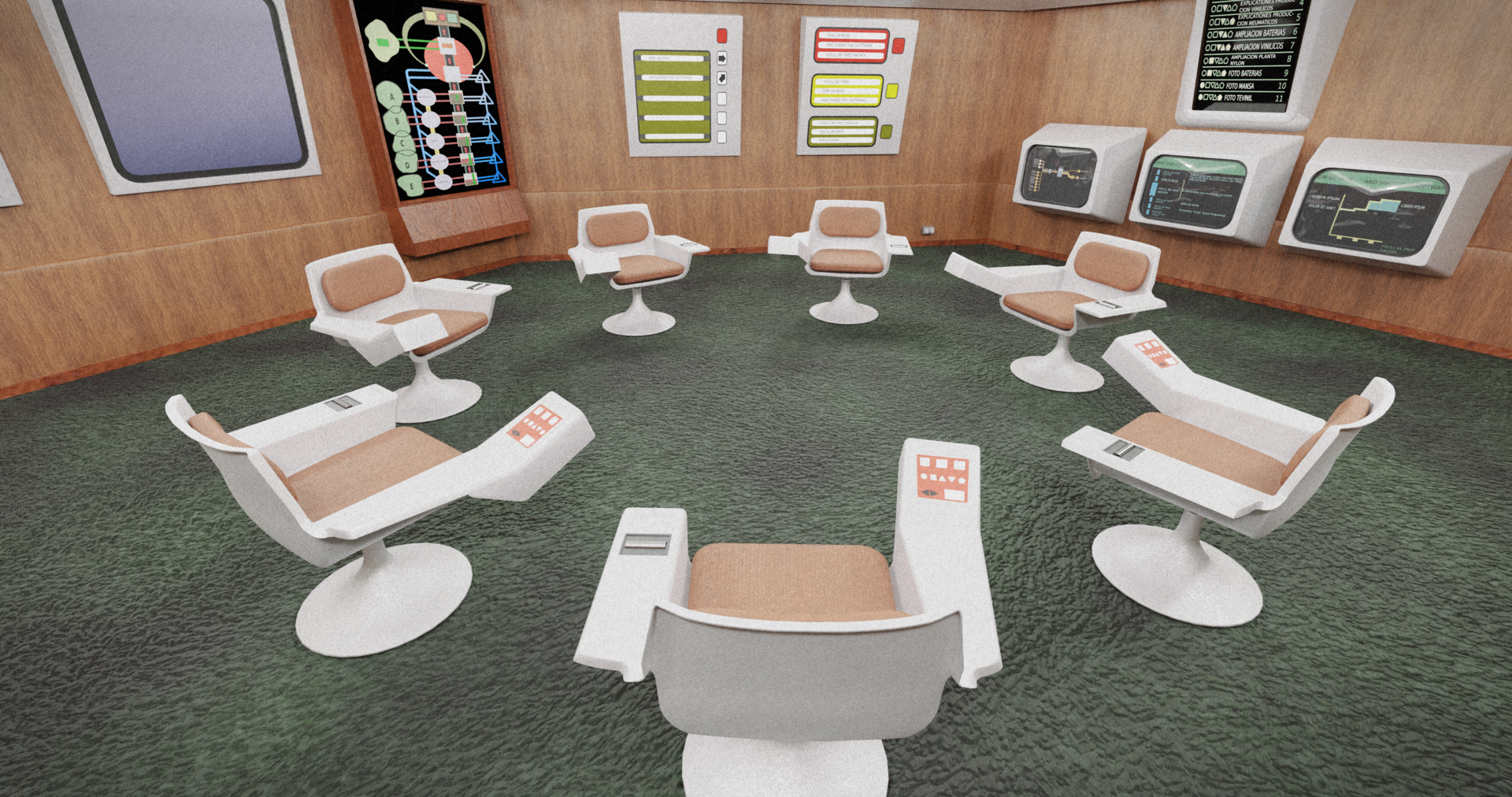
In turn, we use cookies to measure and obtain statistical data about the navigation of the users. You can configure and accept the use of the cookies, and modify your consent options, at any time.

Chile’s cybernetic control project collapsed in 1972. Why did Project Cybersyn fail, and what can we learn from its history?
Image: Rama, Wikimedia Commons
This story was originally published in SCENARIO Magazine Issue 60, 2021
If you were to write a history of the information age, a good place to begin would be with the launch of ARPANET in 1969. You could begin the story sooner, but ARPANET is a suitable starting point, since it was the first working prototype of the internet. You might continue the story with the commercialisation of the internet, beginning with Telenet in 1975, and your story might culminate in the 90s with the rise of home computing and the World Wide Web, which brought the internet to the masses.
It would be natural for this story to have a Western centre of gravity. ARPANET and Telenet were developed in the US, while the World Wide Web was created at CERN in Switzerland by the British computer scientist Tim Berners-Lee in the final years of the Cold War. But the story would likely leave out the fact that elsewhere in the world, other systems similar to the Western internet, but designed for different purposes, were being built in parallel. None of them succeeded, which helps to explain why they are mostly forgotten, but remembering them (and why they failed) is still of value, not just because they are stories of what might have been, but because they serve as a reminder that technologies never emerge (or fail to emerge) in a contextual vacuum. Rather, there are actors working to decide how and for what purpose they are applied, and ultimately, whether they succeed or not. Furthermore, as we are reminded with the contemporary debates on ethics in AI or algorithmic biases online and elsewhere, ideology is baked into the design of our technologies, and the hidden politics of tech in turn impact our lives in often unnoticed ways.

Broaden your horizons with a Futures Membership. Stay updated on key trends and developments through receiving quarterly issues of FARSIGHT, live Futures Seminars with futurists, training, and discounts on our courses.
become a futures memberThe history of Project Cybersyn is one of these forgotten tales from the early information age which holds some important lessons for us today. The story begins in Chile in 1970, where Salvador Allende has just become South America’s first democratically elected socialist president, running on a programme of widespread reform of the country’s healthcare, education, and agriculture. Right off the bat, Allende’s government runs into one of the major challenges facing any fledgling socialist state: the management of the country’s newly nationalised industries.
The task is made all the more difficult by the fact that outside forces are arraying themselves to cause Allende’s project to fail. The Nixon administration, fearing for the future of US business interests in Chile, begins to turn up the heat on Allende by trying to cripple Chile’s economy and thus make conditions ripe for an uprising and a transfer of power. Investments and imports from the US are halted, and funds from the World Bank quickly dry up. Meanwhile, behind the scenes, the CIA is funnelling millions of dollars to Chile’s opposition parties and working to strengthen right-wing militia groups in the country.
With such obstacles in place, creative thinking will need to be applied to deliver on the political promises made. Project Cybersyn, a kind of low-tech proto-internet designed for the distributed management of Chile’s industries, is part of the solution. The mastermind behind the system is Stafford Beer, a British management consultant who is flown in from London to work in close collaboration with Chilean engineers and scientists. Luckily for them, Beer’s ambitions turn out to match those of the new Chilean government.
As the name suggests, Cybersyn draws its design principles from cybernetics, the theoretical framework that guides Beer’s thinking. The central characteristic of a cybernetic system is that it works through ‘circular causality’, meaning that the outcomes of actions act as inputs for further action. A thermostat regulating the temperature in a building is a cybernetic system, as is a human brain (although a more complex one). Beer believes that by seeing and treating the management of the Chilean state as a giant cybernetic machine, and by having systems in place that will support decision-making in real-time based on various inputs, Chile will see ‘an explosion of potential throughout the economy’.
To make it work, a number of challenges will need to be overcome. The main problem that Beer sees is related to data. For a state-wide cybernetic system to make sense, economic data needs to flow instantaneously. Incredibly enough, the solution to this challenge does not come from new high-tech machinery built to meet the need, but from using existing hardware in creative new ways. Chile has only one computer. What the country does have in plentiful amounts, however, are telex machines able to transmit written messages electronically and instantaneously. These telex machines are to be the neurons in Chile’s cybernetic brain.
The central hub in this network is a headquarters located in downtown Santiago. The operations room is designed with democratic decision-making in mind, allowing government officials and factory employees to coordinate in a non-hierarchical manner. The room is fitted out with futuristic design elements, including chairs that look like they belong on the set of 2001: A Space Odyssey. Surrounding the circle of chairs — uneven in number so that a tie in votes will not be possible — are walls of consoles with screens displaying the incoming data. Symptomatic of Cybersyn’s cutting-edge futuristic aesthetics yet low-tech functionality, all of these screens are changed by hand.

Explore the world of tomorrow with handpicked articles by signing up to our monthly newsletter.
sign up hereAlthough Cybersyn’s main purpose is industrial management, Beer’s ambitions for applying cybernetics to the Chilean socialist experiment do not end there. He plans for each Chilean household to eventually have an electric dial installed that can be turned up or down to indicate the mood of the residents. The aggregated results of these measurements will provide a key indicator for the government of how their policies are being received in real time, as a kind of early experiment in social big data.
This, regrettably, is where the story ends. In 1973, Project Cybersyn meets its premature demise when a US-supported military coup led by Augusto Pinochet overthrows the Chilean government, ushers in a right-wing dictatorship and initiates a programme of rapid economic liberalisation of the country. In a post-socialist Chile characterised by a combination of military rule and economic neoliberalism, there is little use for a distributed cybernetic system monitoring and managing the national economy.
Today, Cybersyn is a footnote in the history of the information age, but it remains a powerful example of the interconnected nature of technology, power and politics. We have since seen the ability of distributed communications technologies — and the internet in particular — to radically transform society, guided both by user behaviour and market forces, but also by the political actors that help shape it. How would history have been different, if a democratic socialist web had survived the journey from drawing board to practical application?

Stay up-to-date with the latest issue of FARSIGHT
Become a Futures Member